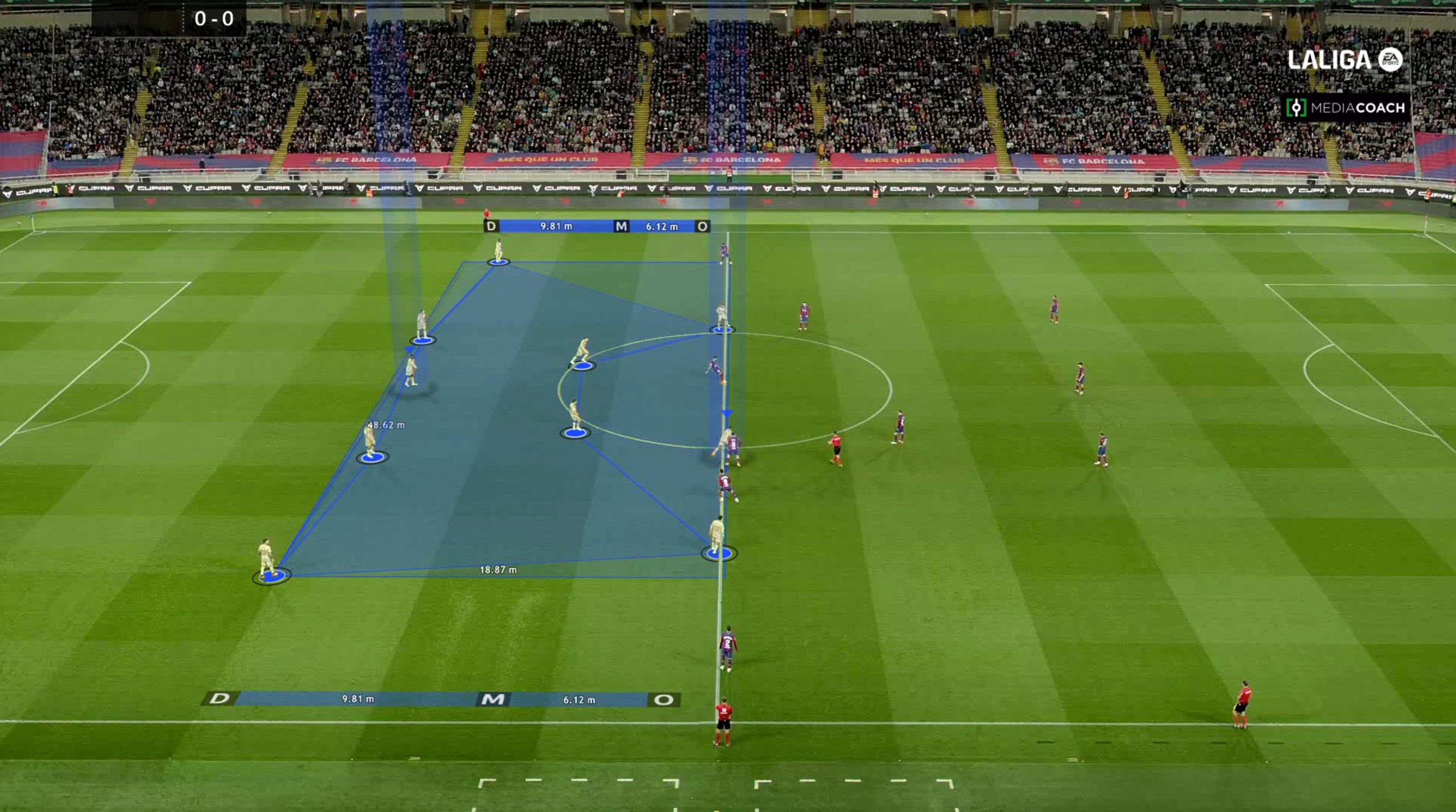
17 Jun Impact of Playing Systems on Team Performance in LaLiga EA Sports: A Quantitative Analysis
Abstract
This study investigates the impact of playing systems on the performance metrics of teams in LaLiga EA Sports during the 2023/24 season. The analysis focuses on two key metrics: total distance covered per minute and ball circulation speed (passes per minute). These metrics are crucial for understanding player movement and interaction on the field. The study examines the most used playing systems: 1-4-2-3-1, 1-4-3-3, 1-4-4-2, and 1-5-3-2. Results indicate significant differences in these metrics based on the playing system, with some systems showing higher performance metrics than others.
Introduction
The playing system is a fundamental part of any football team’s strategy. It determines how players are distributed and move on the field, potentially affecting the team’s overall performance. This study aims to evaluate whether the playing system used by teams in LaLiga EA Sports significantly impacts two key performance metrics: total distance covered per minute and ball circulation speed (passes per minute). These metrics were chosen because passes connect players in possession of the ball, while the distance covered reflects the amount of movement by the players.
Methodology
Data
Data were collected from matches played by LaLiga EA Sports teams during the 2023/24 season. Each row in the dataset represents a team’s performance in a specific match, including the playing system used, total distance covered per minute, and ball circulation speed (passes per minute).
Descriptive Analysis by Playing System
Descriptive analysis was performed for each playing system (1-4-2-3-1, 1-4-3-3, 1-4-4-2, 1-5-3-2) to check the consistency of the metrics within each system.
Team Analysis
An analysis of variance (ANOVA) was conducted to determine if there were significant differences in the metrics between the playing systems within each team.
Clustering of Teams
Teams were clustered based on their distance and pass metrics using the K-means algorithm. The optimal number of clusters was determined using the silhouette score, followed by an ANOVA to assess significant differences between clusters.
Analysis Within Clusters
An ANOVA was conducted within each cluster to evaluate differences in metrics by playing system.
Intra-Team Analysis
A t-test was used to compare the metrics between the two most used playing systems for each team during the season.
Results
Descriptive Analysis by Playing System
The analysis showed no significant differences in total distance covered per minute or ball circulation speed between the playing systems overall.
Team Analysis
The ANOVA revealed that most teams did not show significant differences in the metrics based on the playing system used. However, teams like Athletic Club and Real Betis exhibited significant differences in pass rates, suggesting an impact of the playing system.
Clustering of Teams
The clustering analysis grouped teams into three clusters, revealing significant differences in both metrics between clusters, indicating variability in team performance that may be related to their playing styles.
Analysis Within Clusters
No significant differences were found in the metrics based on the playing system within the clusters, indicating that within similar groups of teams, the playing system does not significantly affect these metrics.
Intra-Team Analysis
Most teams did not show significant differences in metrics between their two most used playing systems, suggesting that changes in the playing system do not significantly impact the distance covered per minute or pass rates within the specific context of each team.
Key Insights from Additional Data
A separate analysis of LaLiga EA Sports data during the 2023/24 season, focusing on the four most used playing systems, included metrics such as total distance covered per minute, ball circulation speed, total actions, and goals for and against. The findings revealed:
- Total Distance Covered per Minute: Teams using the 1-4-3-3 (1178.13 meters) and 1-4-2-3-1 (1167.90 meters) systems covered more distance per minute.
- Ball Circulation Speed: The 1-4-3-3 system showed a higher pass rate (15.62 passes/minute).
- Total Actions: The 1-4-3-3 system also had the highest total actions per match (670.58 actions).
However, no significant differences in match outcomes (win, draw, or lose) were associated with the playing system, suggesting that while the playing system affects certain performance aspects, match results depend on other factors like player quality and match-specific tactics.
Discussion
The results indicate that, generally, the playing system does not significantly impact total distance covered per minute or ball circulation speed for most LaLiga teams. However, notable exceptions highlight the importance of the specific context of each team. While playing systems are essential for strategy, factors like individual playing styles and player quality also play crucial roles in team performance.
Conclusions
This study suggests that, although playing systems are fundamental for team strategy, a personalized and adapted approach to each team’s unique characteristics may be more effective than a strategy based solely on the playing system. The findings offer valuable insights for coaches, analysts, and football enthusiasts, providing a more nuanced perspective on how teams can optimize performance.


